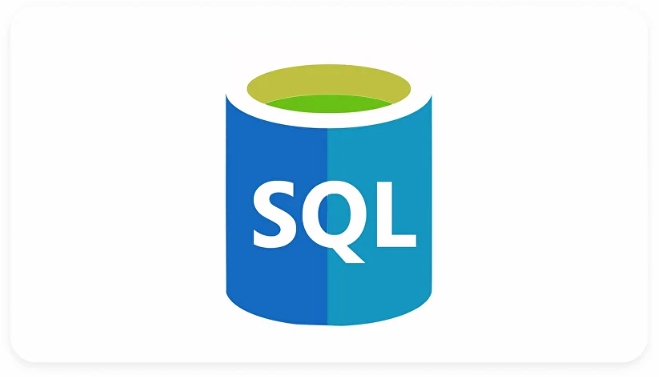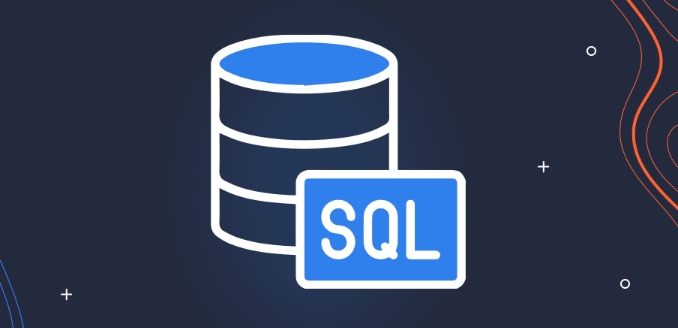Cloud SQL Migrations: AWS RDS, Azure SQL DB, Google Cloud SQL
Jul 29, 2025 am 02:38 AMMigrating databases to the cloud SQL service requires clarifying the goals, choosing the appropriate method, paying attention to network permissions, and verification optimization. 1. Clarify the migration goals, such as saving costs or unifying the platform, and select suitable cloud services based on database engine compatibility. 2. Select logical migration, physical migration, real-time copy or third-party tools based on data volume and downtime tolerance. 3. Ensure that the network access rights of the source and destination databases are correctly configured, enable SSL connections and limit minimum permissions. 4. Verify data integrity, performance, application connection and backup mechanism after migration, and optimize resource configuration and query performance if necessary.

Migrating databases to SQL services on the cloud, such as migration from AWS RDS to Google Cloud SQL, or migration from Azure SQL DB to another platform, is something that many companies cannot avoid in the process of going to the cloud. This doesn't sound complicated, but it's easy to get stuck in the trap if you really do it. The key is to understand the core points of migration goals, data consistency, network connectivity, and permission configuration.

1. Clarify migration goals and applicable scenarios
Before you start, think clearly about why you want to migrate. Want to save costs? Improve performance? Or to unify the platform? SQL services on different cloud platforms vary in functionality, compatibility and price.
for example:

- AWS RDS supports a variety of database engines (MySQL, PostgreSQL, SQL Server, etc.), which is suitable for enterprises that already use the AWS ecosystem.
- Azure SQL DB is more suitable for applications that have been deployed on Azure, especially those of the .NET ecosystem.
- Google Cloud SQL does a good job in automation operations and maintenance, and is suitable for teams who want to reduce DBA workload.
If you just want to change the cloud platform but the database engine remains unchanged (for example, it is all MySQL), the migration will be much less difficult. If you want to migrate across engines (such as from SQL Server to PostgreSQL), you have to consider data structure transformation and compatibility issues.
2. Choose the right migration method
Depending on your data volume, downtime tolerance and network environment, there are several common migration methods:

- Logical migration (export and import) : Use
mysqldump,pg_dumpand other tools to export SQL files, and then import them into the target database. Suitable for scenarios where data volume is small and can accept short-term shutdowns. - Physical migration (snapshot/backup recovery) : For example, export backup files from RDS and then restore them to Cloud SQL. Fast speed, but high requirements for database version and engine compatibility.
- Real-time replication/synchronous migration : Use tools such as database master-slave replication, DMS (AWS Database Migration Service) or Datastream (Google Cloud) to achieve non-stop migration. Suitable for production environment migration.
- Third-party tools : such as Flyway, Liquibase, Navicat, etc., can simplify the migration process, but require additional costs and learning time.
It is recommended to practice the migration process in the test environment first to ensure that data will not be lost due to version differences, character set inconsistent, etc.
3. Pay attention to network and permission configuration
The most easily overlooked during the migration process are network and permission configuration. for example:
- Does the source database allow access from the target cloud platform's IP address?
- Is the target database configured with the correct whitelist?
- Does the database user have sufficient permissions to import?
- Is SSL connection enabled? Do I need to verify the certificate?
Taking Google Cloud SQL as an example, you need to add the source database's export IP in the "Authorized Network" or use VPC Service Controls to connect to the network. AWS RDS can be connected across clouds through VPC Peering or Direct Connect.
In terms of permissions, it is recommended to create a dedicated user for the migration task, only grant necessary permissions (such as SELECT, INSERT, CREATE, etc.), avoid using root account operations, and reduce security risks.
4. Post-migration verification and optimization
After the migration is completed, don’t rush to cut traffic. Do a few key verifications first:
- Data integrity: Compare whether the data volume, table structure, and index of the source and target database are consistent.
- Performance: Has the query speed significantly decreased after migration? Is the index invalid?
- Application Connection Test: Can the application connect to the new database normally? Is the connection string updated?
- Backup and Recovery Mechanism: Is automatic backup configured? Is the recovery process smooth?
If you find performance issues, you can consider adjusting the configuration of the database instance (such as CPU, memory, disk type), or optimizing slow query statements.
Basically that's it. Migrating databases is not a high-tech, but they have many details and are prone to errors. As long as you plan the process in advance, test the environment, pay attention to the "small problems" such as the network and permissions, the success rate will be much higher.
The above is the detailed content of Cloud SQL Migrations: AWS RDS, Azure SQL DB, Google Cloud SQL. For more information, please follow other related articles on the PHP Chinese website!

Hot AI Tools

Undress AI Tool
Undress images for free

Undresser.AI Undress
AI-powered app for creating realistic nude photos

AI Clothes Remover
Online AI tool for removing clothes from photos.

Clothoff.io
AI clothes remover

Video Face Swap
Swap faces in any video effortlessly with our completely free AI face swap tool!

Hot Article

Hot Tools

Notepad++7.3.1
Easy-to-use and free code editor

SublimeText3 Chinese version
Chinese version, very easy to use

Zend Studio 13.0.1
Powerful PHP integrated development environment

Dreamweaver CS6
Visual web development tools

SublimeText3 Mac version
God-level code editing software (SublimeText3)

Hot Topics
 Defining Database Schemas with SQL CREATE TABLE Statements
Jul 05, 2025 am 01:55 AM
Defining Database Schemas with SQL CREATE TABLE Statements
Jul 05, 2025 am 01:55 AM
In database design, use the CREATETABLE statement to define table structures and constraints to ensure data integrity. 1. Each table needs to specify the field, data type and primary key, such as user_idINTPRIMARYKEY; 2. Add NOTNULL, UNIQUE, DEFAULT and other constraints to improve data consistency, such as emailVARCHAR(255)NOTNULLUNIQUE; 3. Use FOREIGNKEY to establish the relationship between tables, such as orders table references the primary key of the users table through user_id.
 Key Differences Between SQL Functions and Stored Procedures.
Jul 05, 2025 am 01:38 AM
Key Differences Between SQL Functions and Stored Procedures.
Jul 05, 2025 am 01:38 AM
SQLfunctionsandstoredproceduresdifferinpurpose,returnbehavior,callingcontext,andsecurity.1.Functionsreturnasinglevalueortableandareusedforcomputationswithinqueries,whileproceduresperformcomplexoperationsanddatamodifications.2.Functionsmustreturnavalu
 Using SQL LAG and LEAD functions for time-series analysis.
Jul 05, 2025 am 01:34 AM
Using SQL LAG and LEAD functions for time-series analysis.
Jul 05, 2025 am 01:34 AM
LAG and LEAD in SQL are window functions used to compare the current row with the previous row data. 1. LAG (column, offset, default) is used to obtain the data of the offset line before the current line. The default value is 1. If there is no previous line, the default is returned; 2. LEAD (column, offset, default) is used to obtain the subsequent line. They are often used in time series analysis, such as calculating sales changes, user behavior intervals, etc. For example, obtain the sales of the previous day through LAG (sales, 1, 0) and calculate the difference and growth rate; obtain the next visit time through LEAD (visit_date) and calculate the number of days between them in combination with DATEDIFF;
 Can You Provide Code Examples Demonstrating Pattern Matching in SQL?
Jul 04, 2025 am 02:51 AM
Can You Provide Code Examples Demonstrating Pattern Matching in SQL?
Jul 04, 2025 am 02:51 AM
Pattern matching functions in SQL include LIKE operator and REGEXP regular expression matching. 1. The LIKE operator uses wildcards '%' and '_' to perform pattern matching at basic and specific locations. 2.REGEXP is used for more complex string matching, such as the extraction of email formats and log error messages. Pattern matching is very useful in data analysis and processing, but attention should be paid to query performance issues.
 How to find columns with a specific name in a SQL database?
Jul 07, 2025 am 02:08 AM
How to find columns with a specific name in a SQL database?
Jul 07, 2025 am 02:08 AM
To find columns with specific names in SQL databases, it can be achieved through system information schema or the database comes with its own metadata table. 1. Use INFORMATION_SCHEMA.COLUMNS query is suitable for most SQL databases, such as MySQL, PostgreSQL and SQLServer, and matches through SELECTTABLE_NAME, COLUMN_NAME and combined with WHERECOLUMN_NAMELIKE or =; 2. Specific databases can query system tables or views, such as SQLServer uses sys.columns to combine sys.tables for JOIN query, PostgreSQL can be used through inf
 How to create a user and grant permissions in SQL
Jul 05, 2025 am 01:51 AM
How to create a user and grant permissions in SQL
Jul 05, 2025 am 01:51 AM
Create a user using the CREATEUSER command, for example, MySQL: CREATEUSER'new_user'@'host'IDENTIFIEDBY'password'; PostgreSQL: CREATEUSERnew_userWITHPASSWORD'password'; 2. Grant permission to use the GRANT command, such as GRANTSELECTONdatabase_name.TO'new_user'@'host'; 3. Revoke permission to use the REVOKE command, such as REVOKEDELETEONdatabase_name.FROM'new_user
 What is the SQL LIKE Operator and How Do I Use It Effectively?
Jul 05, 2025 am 01:18 AM
What is the SQL LIKE Operator and How Do I Use It Effectively?
Jul 05, 2025 am 01:18 AM
TheSQLLIKEoperatorisusedforpatternmatchinginSQLqueries,allowingsearchesforspecifiedpatternsincolumns.Ituseswildcardslike'%'forzeroormorecharactersand'_'forasinglecharacter.Here'showtouseiteffectively:1)UseLIKEwithwildcardstofindpatterns,e.g.,'J%'forn
 How to backup and restore a SQL database
Jul 06, 2025 am 01:04 AM
How to backup and restore a SQL database
Jul 06, 2025 am 01:04 AM
Backing up and restoring SQL databases is a key operation to prevent data loss and system failure. 1. Use SSMS to visually back up the database, select complete and differential backup types and set a secure path; 2. Use T-SQL commands to achieve flexible backups, supporting automation and remote execution; 3. Recovering the database can be completed through SSMS or RESTOREDATABASE commands, and use WITHREPLACE and SINGLE_USER modes if necessary; 4. Pay attention to permission configuration, path access, avoid overwriting the production environment and verifying backup integrity. Mastering these methods can effectively ensure data security and business continuity.






